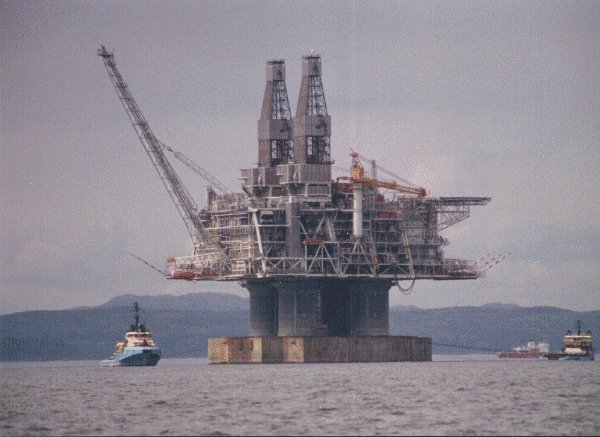Oil price slump threatens Newfoundland’s new-found prosperity

By Professor Wade Locke Professor, Memorial University of Newfoundland
The oil and gas industry has been extremely important to Newfoundland and Labrador. We have produced about 1.5 billion barrels of oil since the industry started in 1997. This had a value of $110 billion. We have collected in the range of $18 to $19 billion in royalties, and we have had investment of $34 billion to $35 billion in development and ongoing operations.
We have about 4% or so of our workforce working directly in Newfoundland, and another 4% to 5% of our workforce working in Alberta in the oil sands. The immediate impact of the fall in the price of oil will be through people being laid off and projects being delayed in Alberta. That will have a dramatic and notable impact on our particular economy. The next impact will be through the treasury. We have now gone into a significant deficit, which will have to be dealt with, as a result of relatively lower oil prices. We had oil prices in the range of $105 for the last four years, and suddenly $105 is not a good number to be using. We’re going through a substantial change in expenditures and taxes.
Hibernia is the second-biggest producing field in Canada’s history. It is behind the Pembina, but a substantial amount of oil comes out of eastern Canada. I would point out that the impacts on Canada will come through a number of ways. One is through equalization, which won’t be felt yet, as a result of the falling revenues from lower oil prices to Alberta, Newfoundland, Saskatchewan, and British Columbia. You will see this in two years’ time, in terms of lower equalization for places like Ontario.
It is interesting when you look at the forecast. We’re expecting by the end of this year to start to return to balance. All of this disruption in the oil and gas sector you should bear in mind is because of a 1% to 2% oversupply, and this caused prices to fall by 60%. It is hard to understand.
There is a lot of uncertainty in terms of the forecast for supply as well. A lot of this is being driven by shale oil production. We’re looking at 100 million barrels a day of increased production, from the current levels of 93 million to 94 million barrels, by 2020. It’s not at all clear where that oil is going to come from. A large chunk was expected to come from Iraq and Libya, and not all of it is coming from shale.
The other thing I would point out is that a lot of the efficiencies that people talk about for shale have already been achieved. They have been drilling in the sweet spots, or spots that are 10 times more productive than the margins. It is not at all clear that they can continue to produce to this level. In fact, the most recent numbers coming out of the drilling report from the EIA a couple of days ago indicate that in April we’re expecting falls in production in shale in three of the four major shale projects. This assumes no growth in demand, as well, in Europe or Japan or any of those places. It wouldn’t take much of a change in any of those places to translate into a huge increase in prices.
Right now, we have a short-term issue; the question is how long it will last. The long-term issue is that there’s not enough supply in shale or in the alternative sources at current prices for this to happen. If prices were to stay at $60, we’d have problems in Newfoundland in terms of the offshore as well.



